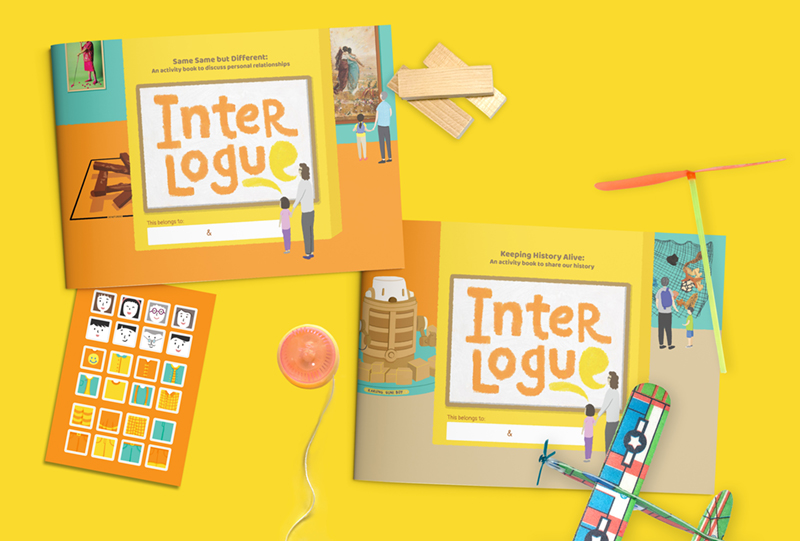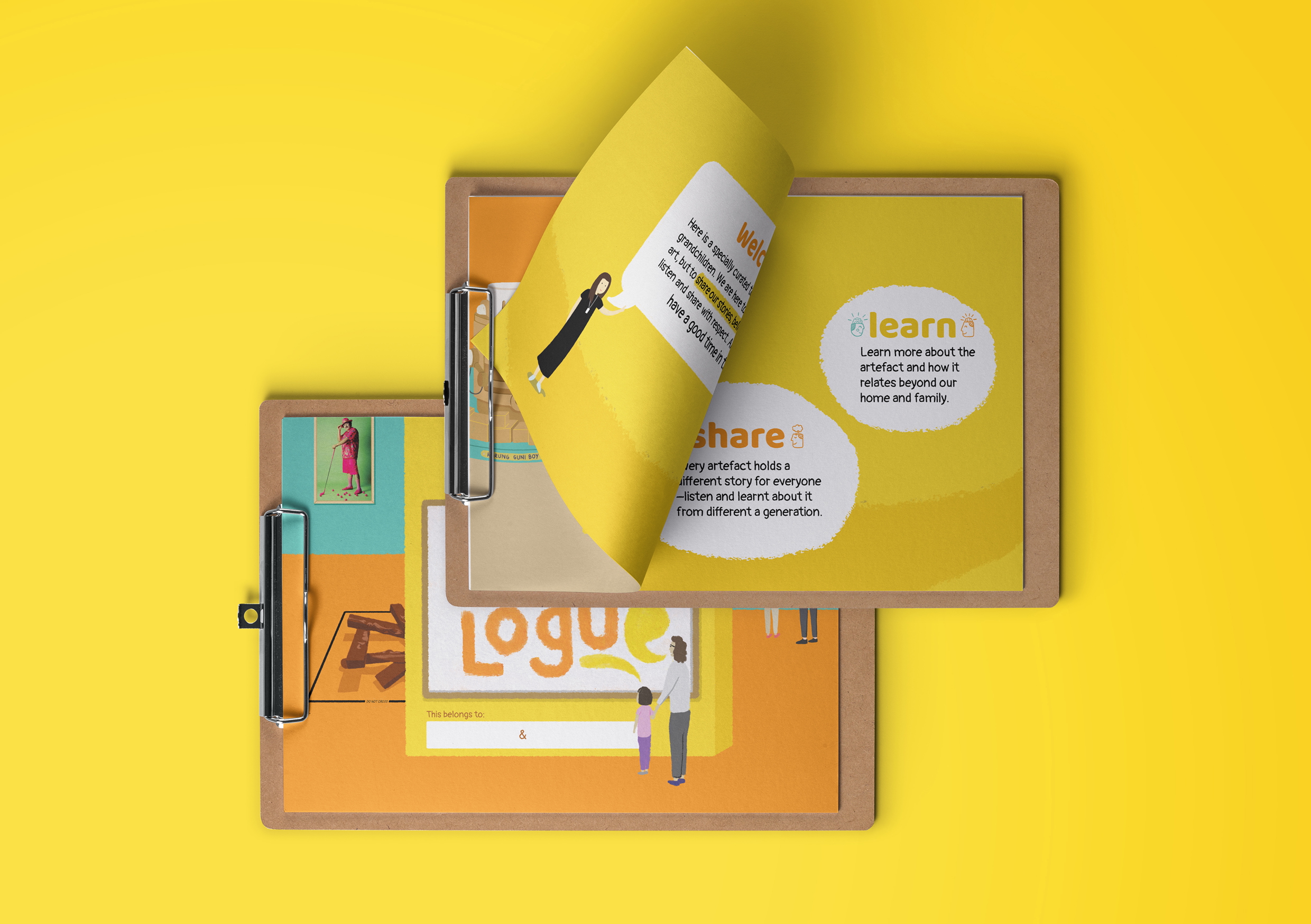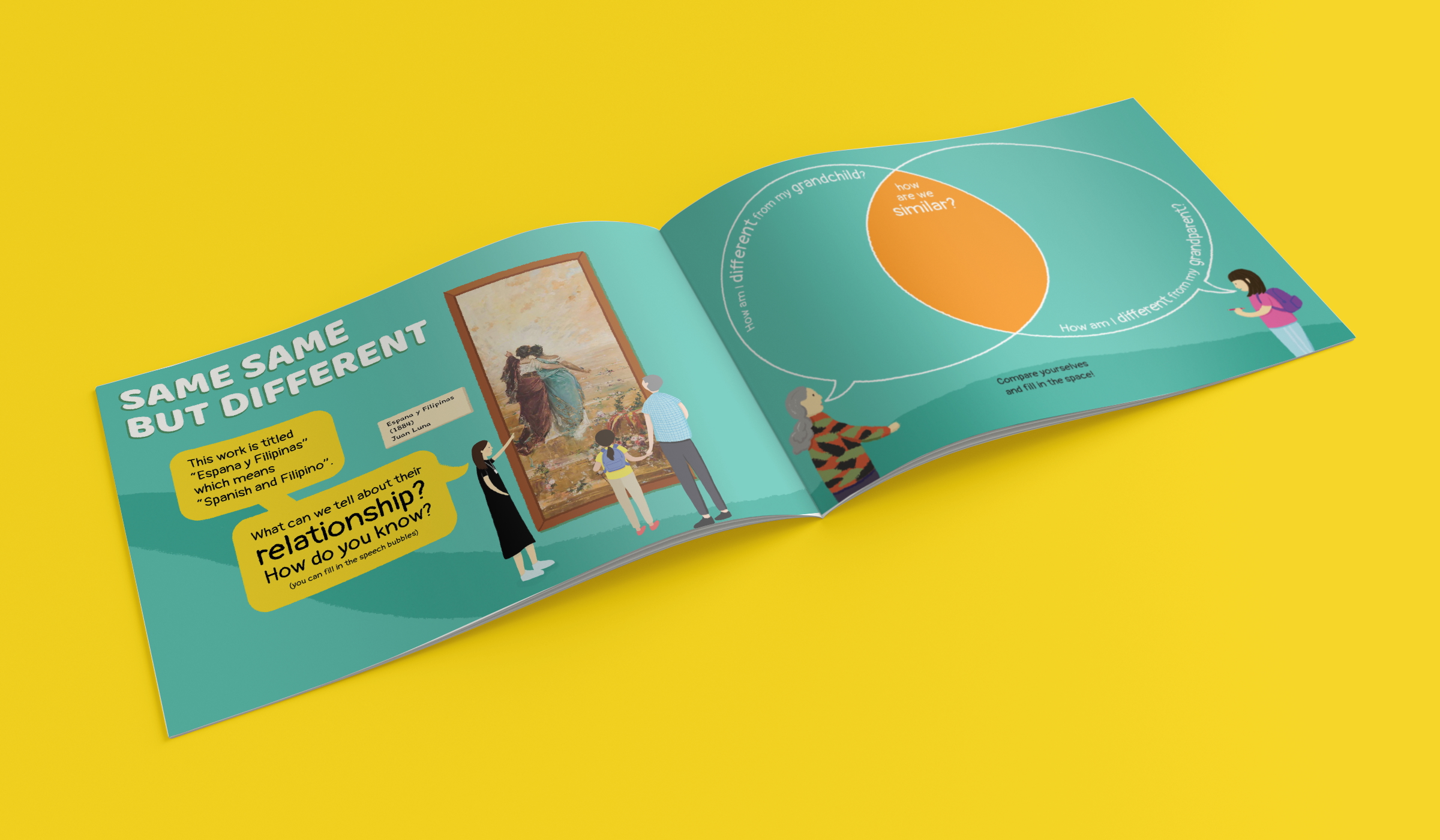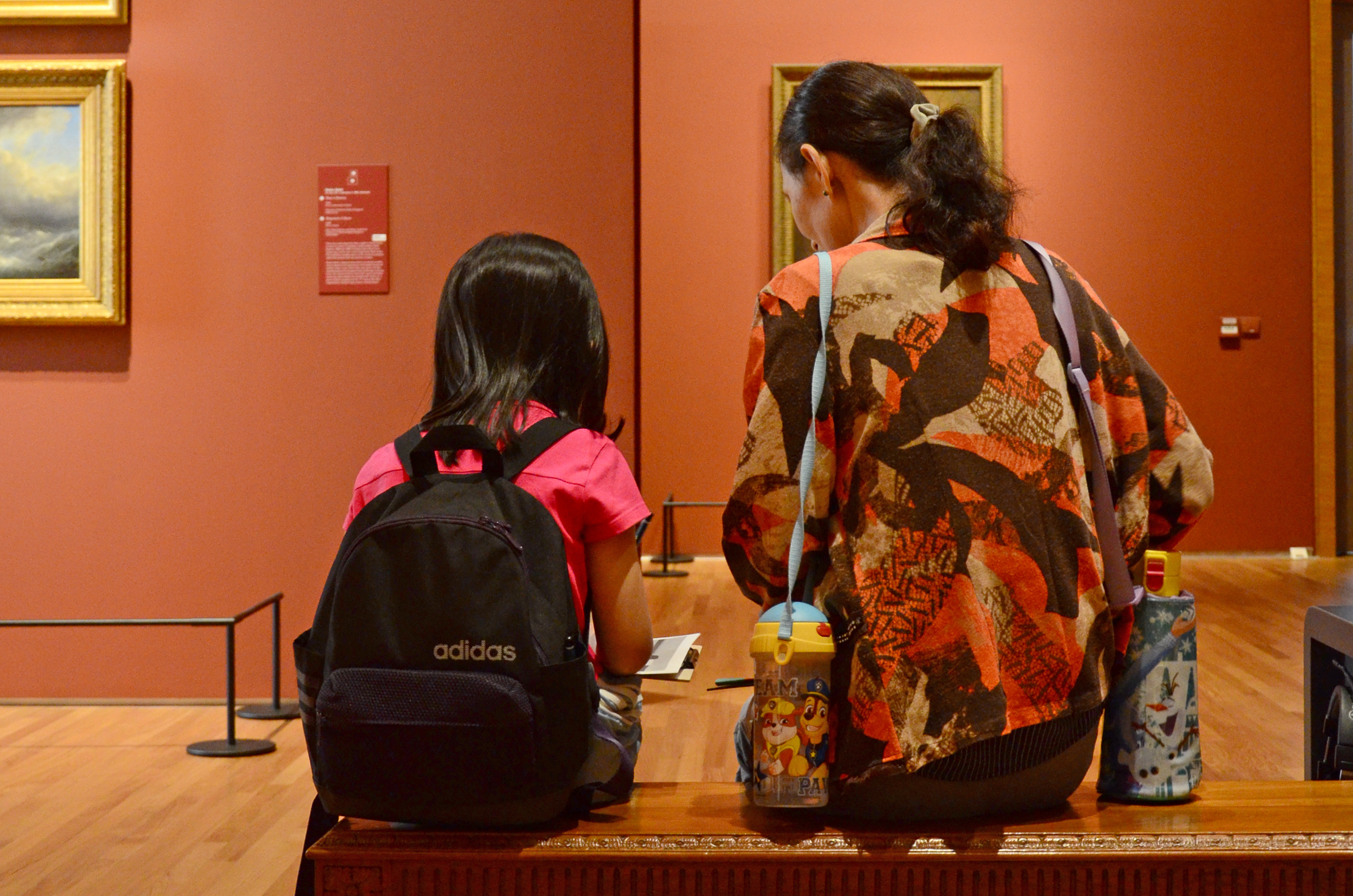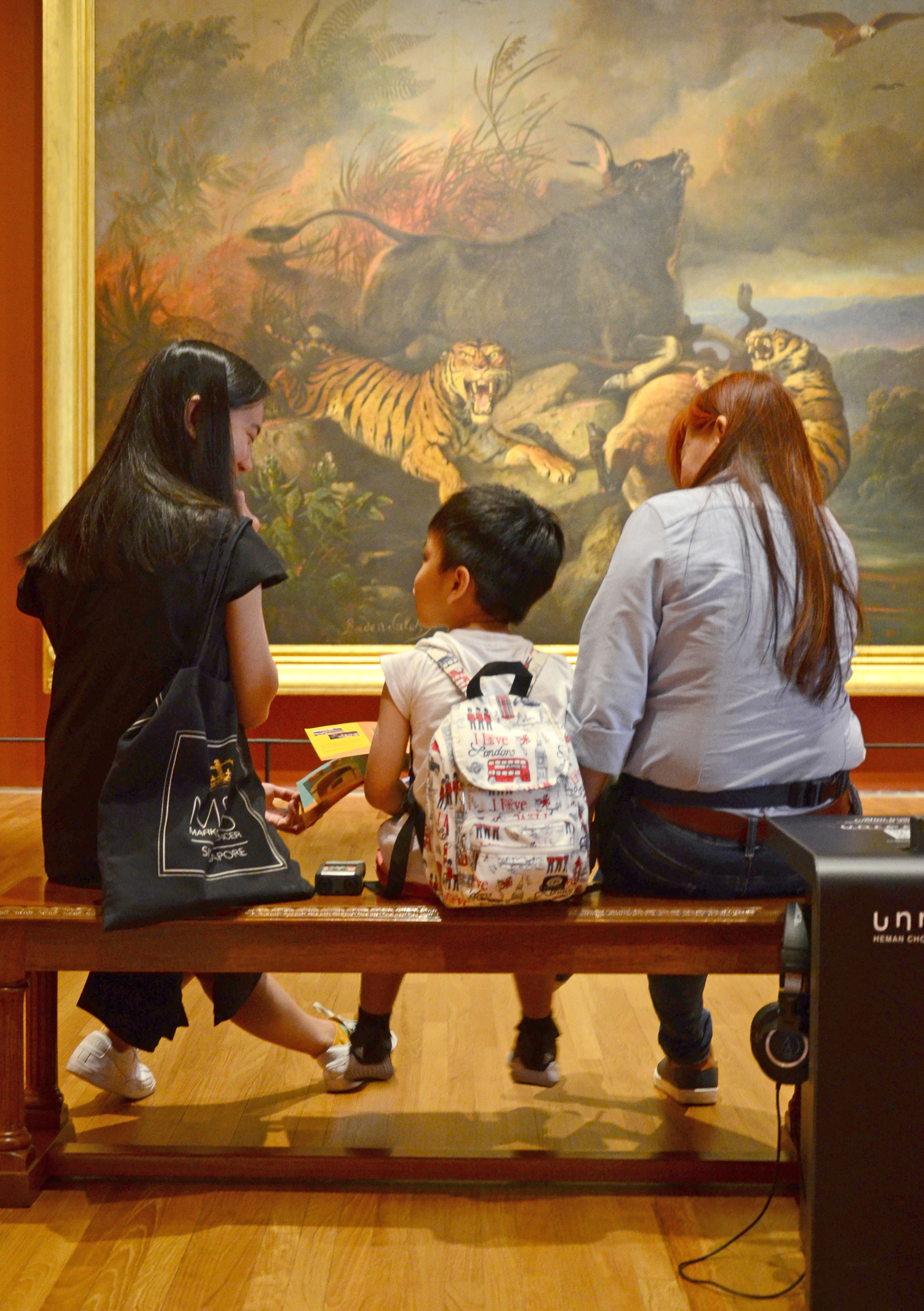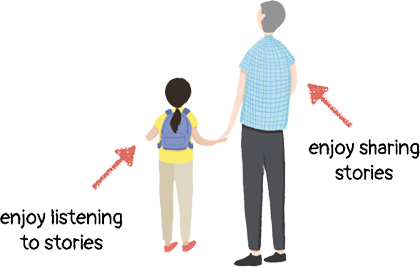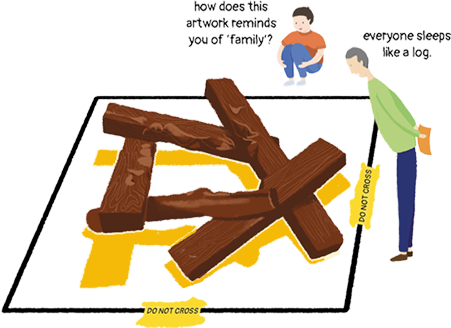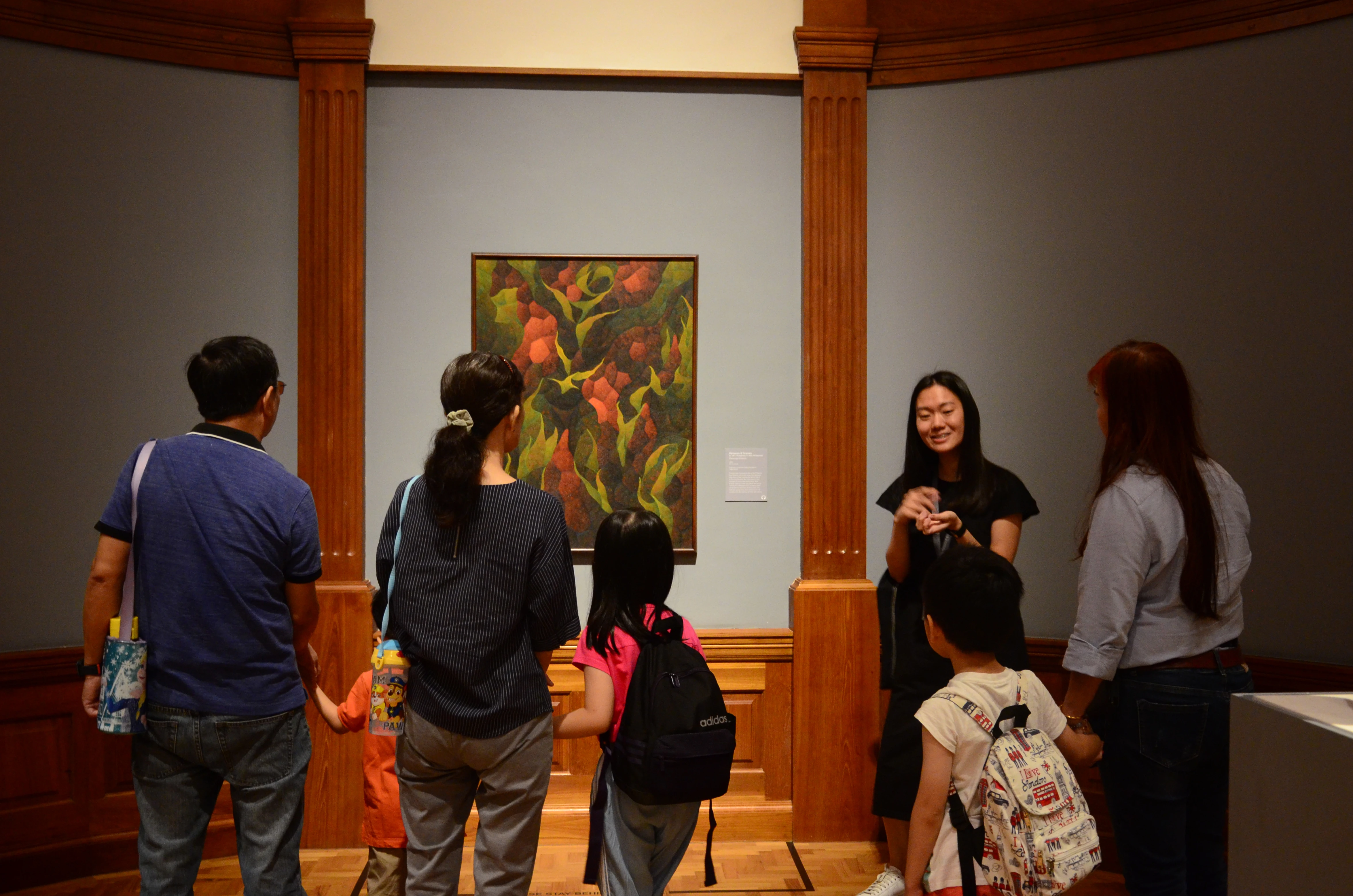
This project stems from my experience as a docent at National Gallery – I realised children love to listen to stories while senior folks love to share their stories. These complementary needs inspired me to research about intergenerational programmes.
Process
- 01 Research
- Understanding of both generations through literature review, observational studies and interviews
- 02 Content Testing
- Consolidated programme ideas and facilitated content testing to identify improvements.
- 03 Framework
- Developed a framework for Interlogue activities to deliver the objective of evoking meaningful intergenerational conversations
- 04 Final Outcome
- Designed programme kit which includes an activity book and objects to prompt engagement and document their sharing
01 Research
1/3 Observational Studies
There is limited literature on intergenerational programme in Singapore museums. Hence, to better understand how intergenerational programmes work in Singapore, observatory studies of two intergenerational programmes were carried out in National Gallery Singapore (NGS) and National Museum Singapore (NMS). The amicable interaction among participants and their enthusiastic engagement with museum artefacts had demonstrated a strong potential for local museums to hold intergenerational programmes.
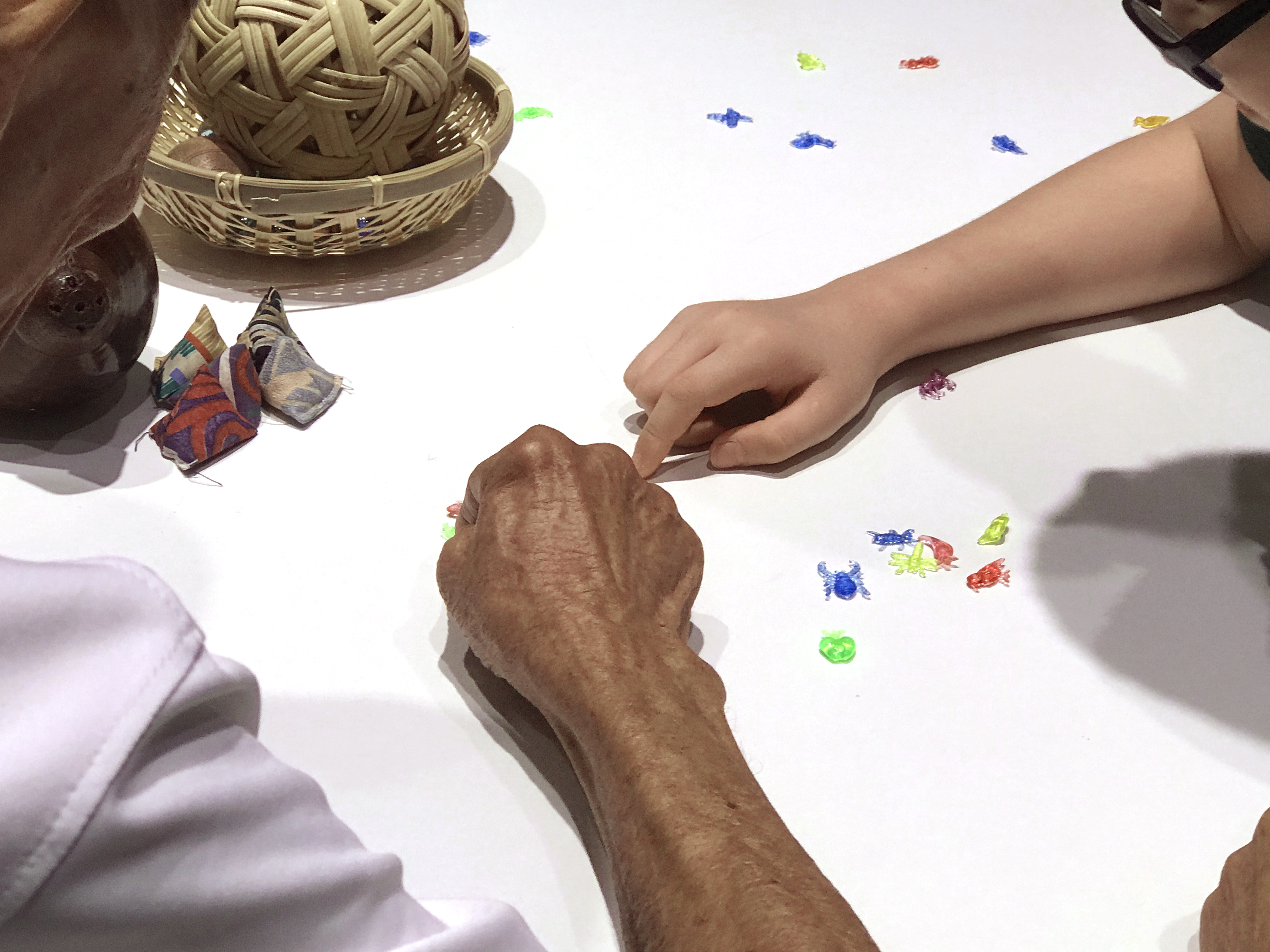

02 Content Testing
After researching and generating a series of activities, I conducted a content testing with 4 children (ranging from 5 to 8 years old) and their grandparents at National Gallery. The objective was to understand the mechanism of interaction between grandparents and grandchildren in museums. The content testing covered 4 artworks from National Gallery Singapore (NGS) and each artwork had accompanying activities to evoke discussions.
Some key observations are:
- Greater responses are evoked when sharing personal narratives compared to historical or national events. Topics related to daily life, such as toys, karung guni, and personal memories at Singapore River, were shared more enthusiastically among participants of both generations.
- Sharing of historical or national events could be hindered if grandparents had not lived through that experience. Providing archival images or oral history may help to bridge such gaps.
- No clear pattern on whether the older or younger is the main driver in conversations.
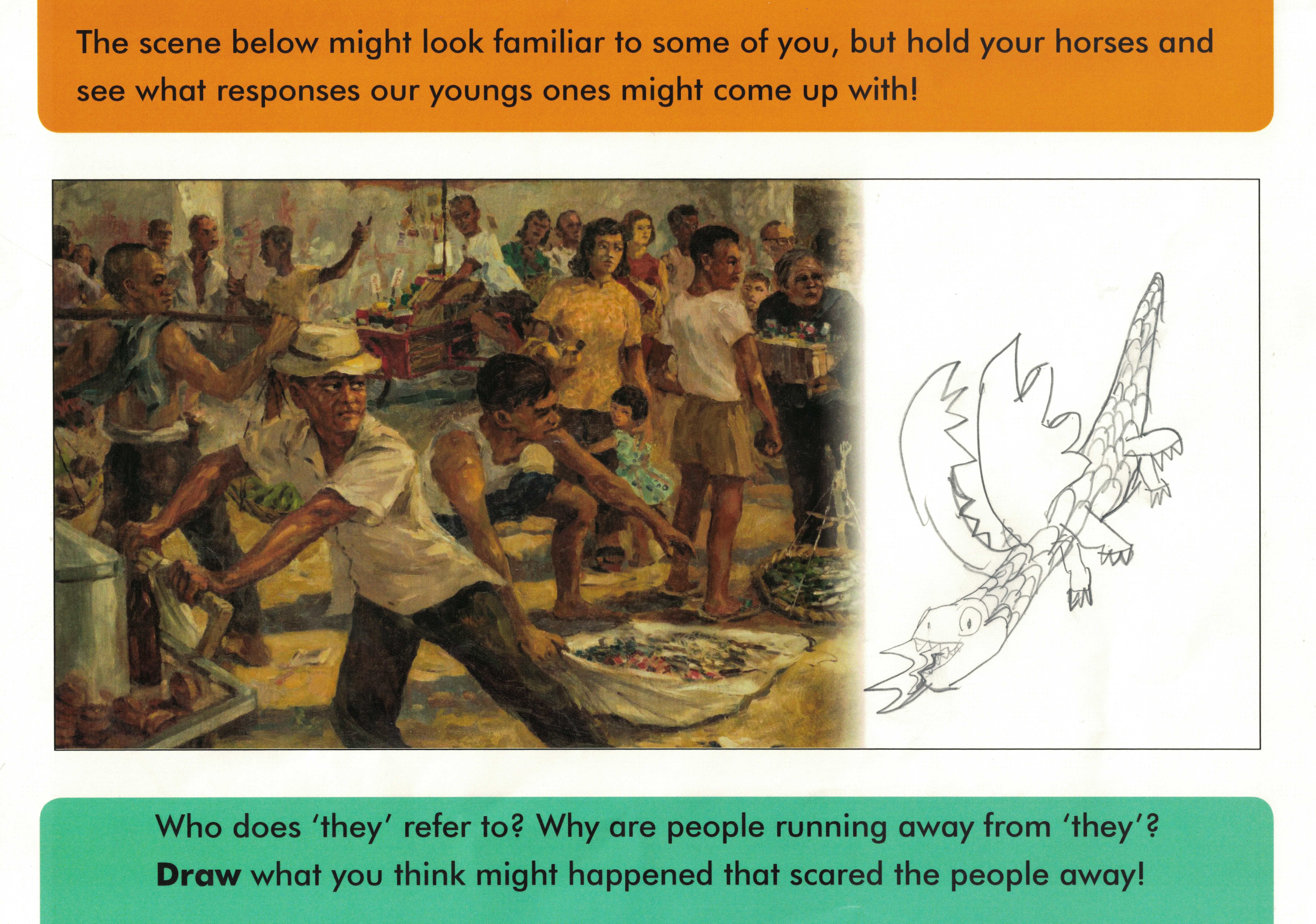

03 Framework
Based on the content testing and earlier research on intergenerational learning, I developed the “See, Share, Learn” framework for Interlogue. This is an adaption of the ‘See, Think, Wonder’ guiding technique often adopted by museum educators.
- See: Every artefact is unique. Take a moment to study it and it might trigger some personal memories.
- Share: Every artefact holds a different story for everyone – listen and learnt about it from different a generation.
- Learn: Learn more about the artefact and how it relates beyond our home and family.
04 Final Outcome
The final outcome is a programme kit that includes an activity book and objects to prompt engagement and document their sharing. The activity book is designed to be used in museums, with prompts for grandparents and grandchildren to engage in conversations about the artefacts they see.
